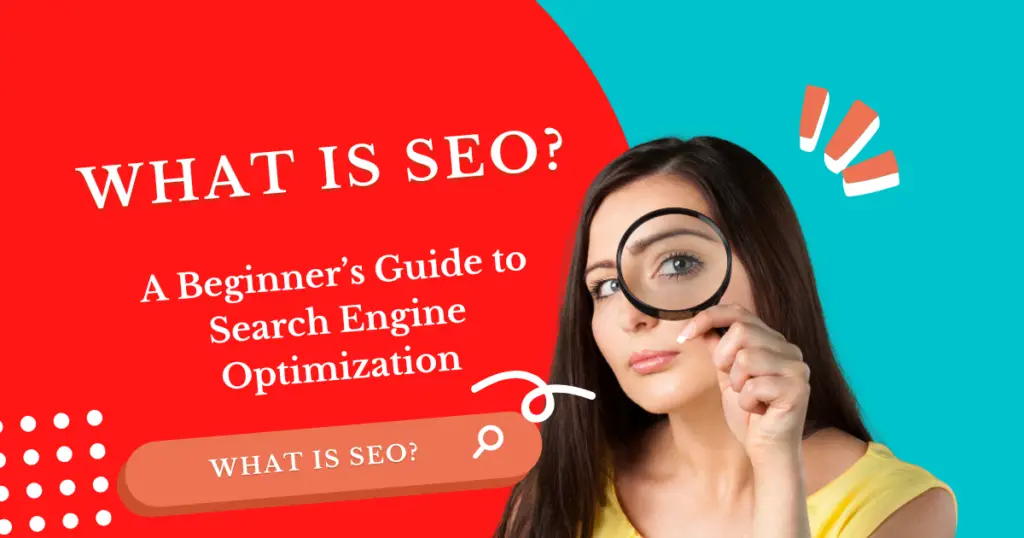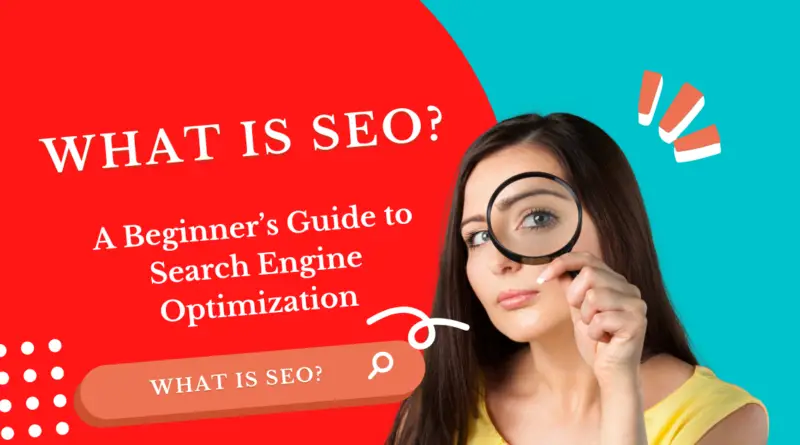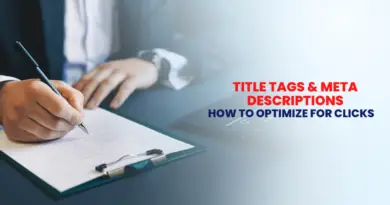What is SEO? A Beginner’s Guide to Search Engine Optimization
Imagine this: You’ve just launched a website for your new bakery business. You have a beautiful design, delicious products, and great offers, but there’s one problem—no one is visiting your site. You search for “best chocolate cake near me,” but your website is nowhere on Google’s first page. That’s where SEO (Search Engine Optimization) comes in.
Understanding SEO in Simple Terms
SEO is the process of optimizing your website to rank higher on search engines like Google, Bing, and Yahoo. When users search for something—whether it’s “best coffee shops in New York” or “how to lose weight naturally”—search engines analyze billions of web pages and display the most relevant results.
Think of Google as a librarian. When you ask for a book on digital marketing, the librarian doesn’t just hand you a random book; they pick the most relevant, well-researched, and popular ones. SEO helps your website become that top recommendation.
Why is SEO Important?
Let’s say you’re looking for a new smartphone. You search on Google, and the first few results catch your eye. Do you scroll to page 5? Probably not. 75% of users never go past the first page of search results. That means if your website isn’t ranking high, potential customers won’t even know you exist.
SEO is important because:
✅ It increases organic traffic (free visitors from search engines)
✅ It builds credibility and trust (users trust Google’s top results)
✅ It provides a long-term marketing strategy (unlike paid ads, SEO keeps working)
✅ It helps businesses compete with larger brands
How Does SEO Work?
Search engines like Google use complex algorithms to decide which pages rank at the top. These algorithms consider factors like:
✔ Keywords – The words people search for (e.g., “what is SEO?”)
✔ Content Quality – Informative, engaging, and useful articles
✔ Backlinks – Other websites linking to yours (like a vote of trust)
✔ User Experience (UX) – Fast loading speed, mobile-friendliness, and easy navigation
To better understand, let’s break SEO into three key areas:
1. On-Page SEO (Optimizing Your Website Content)
On-page SEO is all about improving the content on your website. This includes:
✅ Using the right keywords – Naturally integrating phrases like “what is SEO,” “SEO meaning,” and “how does SEO work step by step” into your content.
✅ Writing compelling title tags & meta descriptions – These appear in search results and entice users to click.
✅ Optimizing images – Using alt text and compressing images for faster loading.
Example:
Imagine you own an online clothing store. If you sell handmade leather bags, your product page should include phrases like:
👉 “Best handmade leather bags for men”
👉 “High-quality leather handbags for women”
If you just name your page “Bag Collection,” search engines won’t understand what you’re selling.
2. Off-Page SEO (Building Website Authority)
Off-page SEO focuses on factors outside your website that influence rankings. The biggest one? Backlinks.
A backlink is when another website links to yours. Think of it like a recommendation—if an authoritative site (like Forbes or HubSpot) links to your blog, Google assumes your content is valuable and boosts your rankings.
Example:
If you write a blog post on “Best SEO Strategies in 2024”, and a popular digital marketing website links to your article, that backlink acts as a vote of confidence.
Ways to get backlinks:
✅ Write guest posts for reputable sites
✅ Create shareable content (infographics, research studies)
✅ Build relationships with bloggers and influencers
3. Technical SEO (Improving Website Performance)
Technical SEO ensures your website is fast, secure, and mobile-friendly. If your site takes more than 3 seconds to load, 40% of visitors will leave.
Google also prioritizes mobile-friendly websites. With over 60% of searches happening on mobile devices, if your website isn’t responsive, you’re losing visitors.
Quick fixes for technical SEO:
✅ Optimize images & enable caching for faster loading times
✅ Use HTTPS for security (SSL certificate)
✅ Create a clean URL structure (avoid long, confusing URLs)
✅ Submit an XML sitemap to help Google crawl your site efficiently
How to Use SEO for Your Website (Step by Step)

Step 1: Do Keyword Research
Before writing content, find out what people are searching for. Free tools like Google Keyword Planner and Ubersuggest help you discover high-traffic keywords.
For example, if you’re writing about SEO for beginners, these keywords can be included:
✅ What is SEO and how does it work
✅ SEO explained in simple terms
✅ How to improve SEO for a website
Step 2: Create High-Quality Content
Google loves fresh, useful, and engaging content. Instead of just defining SEO, explain why it matters and how readers can apply it.
Example:
Bad content: “SEO stands for Search Engine Optimization. It helps websites rank higher.”
Great content: “Imagine having a store in a hidden alley. No foot traffic, no customers. SEO is like placing your store on the busiest street, where thousands of potential buyers pass by every day.”
Which one would you rather read?
Step 3: Optimize On-Page Elements
Make sure your:
✅ Title is catchy – “What is SEO? A Beginner’s Guide to Higher Google Rankings”
✅ Meta description includes keywords – “Learn what SEO is, how it works, and why it’s crucial for your website’s success.”
✅ Headings (H1, H2, H3) use relevant keywords
Step 4: Get Backlinks & Social Shares
Content that gets shared earns backlinks naturally. Try:
✅ Writing in-depth, valuable content (like this guide!)
✅ Promoting on social media & forums (Reddit, Quora)
✅ Reaching out to bloggers for guest posting opportunities
Step 5: Monitor and Improve Your SEO
SEO isn’t a one-time task; it’s an ongoing process. Use Google Search Console and Google Analytics to track rankings, traffic, and engagement.
If certain pages aren’t ranking, update them with better keywords, new insights, or fresh examples.
Final Thoughts: The Future of SEO
SEO is constantly evolving. With voice search, AI-driven algorithms, and mobile-first indexing, businesses must stay updated to remain competitive.
The good news? SEO isn’t just for big brands. Even a small blog or startup can outrank larger companies by focusing on quality content, smart keyword usage, and strong backlinks.
If you’ve ever wondered, “Why isn’t my website getting traffic?”, now you know the answer—SEO. Start implementing these strategies, and soon, you’ll see your website climbing the search engine rankings.
Key Takeaways
✔ SEO (Search Engine Optimization) helps websites rank higher on Google
✔ Organic traffic is free and long-term compared to paid ads
✔ Optimizing content, getting backlinks, and improving site speed are key
✔ SEO is an ongoing process, not a one-time task



